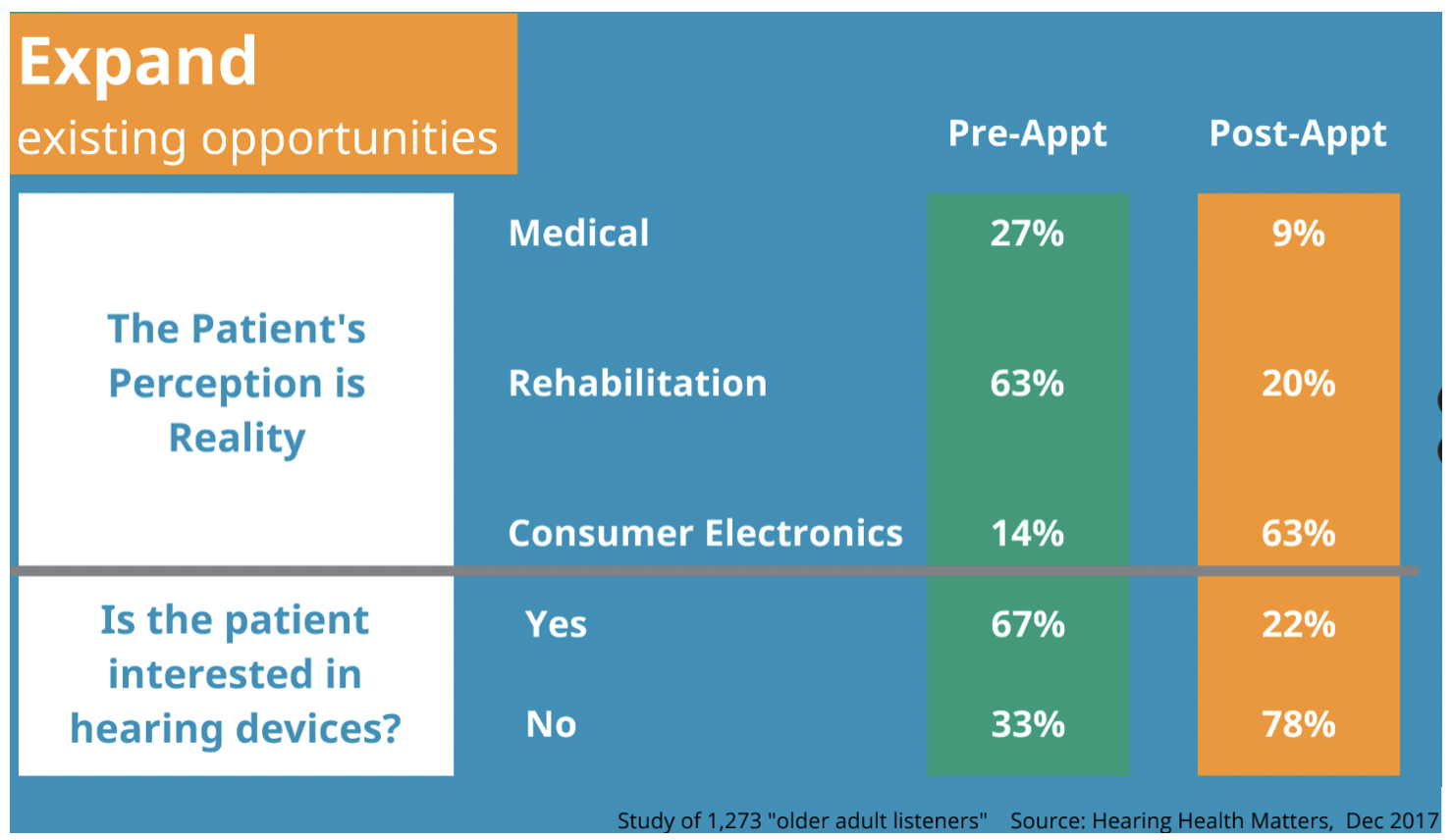
Industry influencers are creating a defining moment for hearing healthcare businesses. Will yours be among those that rise to the challenge and thrive?
When you combine the economic decline created by the pandemic last year with the increasing presence and influence of Third Party Administrators (TPAs) and brand-name OTC options, it’s easy to get overwhelmed by the threats. So, what should you do about these threats? Well, any business coach worth his/her salt will tell you that the best defense is a good offense. That’s why it’s never more crucial to have a strategy for your business—one that’s focused on C-A-R-E.
Of course, patient care is always at the forefront of everything you do. And we’re all aware of the benefits of self-care (seeing to your own physical and mental needs). Those are both important, but they’re not the types of care to which I’m referring—I’m talking about business care!
How often do you really think about the wellness of your business? I don’t mean the day-to-day operations of working in the business. I’m talking about the strategies that safeguard you from the threats of matters like reduced reimbursements and unexpected shutdowns. I can’t promise an easy, magic solution. But I can give you an easy-to-remember formula that will help you to be more thoughtful about the current health and future of your business:
Let’s break down what it means to C-A-R-E for your business:
Create
 Specifically, creating opportunities to help more people hear well. This one is fairly straightforward: it’s about marketing! Let the members of your community know who you are, what you do, why hearing wellness is so important, and why you and your practice are best equipped to serve their hearing healthcare needs. Here are some pointers for how to approach this with your marketing:
Specifically, creating opportunities to help more people hear well. This one is fairly straightforward: it’s about marketing! Let the members of your community know who you are, what you do, why hearing wellness is so important, and why you and your practice are best equipped to serve their hearing healthcare needs. Here are some pointers for how to approach this with your marketing:
- Establish a budget (as a general rule-of-thumb, we recommend 10-12 percent of your revenue goal)
- Identify your strategy:
- Diversify your communication approach, just like you would monetary investments. Direct mail, physician marketing, and community outreach are all still prevalent, among other traditional methods. It’s also more important than ever to have a strong digital presence.
- Research the demographics of your community and identify target zip codes for mailers.
- Strategize your reach and frequency with a calendar of marketing events.
- Use call tracking software to assist in measuring return on investment (ROI) for each campaign.
- Keep manufacturer co-op funds in mind. I heard a rumor that nearly 75 percent of co-op funds allotted to practices go to waste because they’re not used before they expire. Don’t let this happen to you!
If you’re thinking: “easier said than done,” talk to your CQ Account Manager about utilizing our in-house marketing agency for help with the planning, execution, and measurement of your marketing efforts.
Acquire

Once your marketing plan has created the opportunities, that doesn’t mean that your schedule automatically fills up. The purpose of a marketing plan is simply to get the phone to ring. It’s the responsibility of your front office staff to appropriately coordinate patient care and convert those incoming calls into appointments.
Here are some questions to consider:
- What is each incoming call worth to your business? For example, I recently did the math with a practice, and we found that based on their average revenue per opportunity appointment, each time their phone rang, it represented a potential $950 in revenue.
- Does your front office understand the importance of each incoming phone call?
- Does your front office staff recognize their own importance? Have you told them? Not only do they often shape a patient’s first impression of the practice over the phone, but they set the tone as soon as a patient walks through your door.
- Is your staff properly trained to triage calls and identify opportunity appointments?
- Are there scripting and scheduling protocols in place that helps your front office staff set your providers up for success when patients come in for their appointments?
Retain

The typical hearing aid user will purchase an average of 3-4 pairs of devices in their lifetime. Unfortunately, customer loyalty is not a given. According to HubSpot’s research about customer acquisition and loyalty, 50 percent of U.S. consumers have left a brand that they were loyal to for a competitor. My point is that you should never get too comfortable, even when your business has a great number of loyal patients. Don’t underestimate the effort required to retain your existing patients. You should have a strategy for communicating routinely with patients in your database so that they don’t end up going elsewhere when they’re ready to purchase that next pair of hearing aids.
When keeping in touch with these patients, the focus should be on educating them about their options, so that they’re empowered to make informed decisions about their own hearing healthcare. A combination of letters and calls with targeted messaging is the key to success here. You can do it yourself, or opt for more turnkey approaches, like the CQ Database Program or CQ Upgrade. No matter the chosen approach, existing patients should make up approximately half (or more) of a practice’s hearing aids sales if said practice is five years old or over.
Expand

You should get the most out of the opportunities that you already have on your schedule. It’s kind of like working out. Some forms of exercise are more effective than others, depending on your goal. For example, the trainer at my gym taught me that if I only have 30 minutes, I should spend the majority of that time focused on strength training rather than cardio. How does that apply to your business? Well, if your goal is to help more people hear well, but there are limited hours in the week for you to do so, how do you make the most out of that time? Here are some of my recommendations:
- Consider what you’re saying during your consultations. A study done by Hearing Health Matters found that patients’ perceptions and interest levels in hearing devices were significantly different pre and post-appointment.

- Is it possible that what you are saying is making your patients uninterested in hearing devices? Are you doing the majority of talking instead of listening? Are you focusing too much on the features of the devices rather than the challenges/needs of the patient and the impact that the devices would have on their quality of communication? Have you considered that there might be a more effective way to conduct your consultations?
- Improve your likelihood of success by including a companion. Are you making it easier on yourself to get patients to accept help by asking them to bring a loved one to their appointments and also involving those loved ones in the process?
- Set up your schedule to effectively accommodate your patients. Does your schedule allow you to achieve your financial goals without sacrificing patient care? Do you know how many hours are required to do both?
- Do you have a strategy for discussing purchasing options for patients who were not referred by a TPA? Do you verify benefits before each appointment to identify patients who are eligible for a discount program? Are your providers well-versed in discussing purchasing options with patients so that they’re providing price transparency and appropriately educating and empowering patients to make the choice that’s in their best interest?
Like personal wellness, one day of exercise a week isn’t going to get you in shape. Getting healthy and fit requires a constant and ongoing commitment. The same goes for your business. It takes continuous effort and some C-A-R-E. Can you get fit on your own? Sure, but it’s a lot easier and faster if you have a personal trainer to show you what to do, remind you how to do it right, and hold you accountable to your goals.
So, why not let CQ’s experienced team of experts act as personal trainers for your business?









